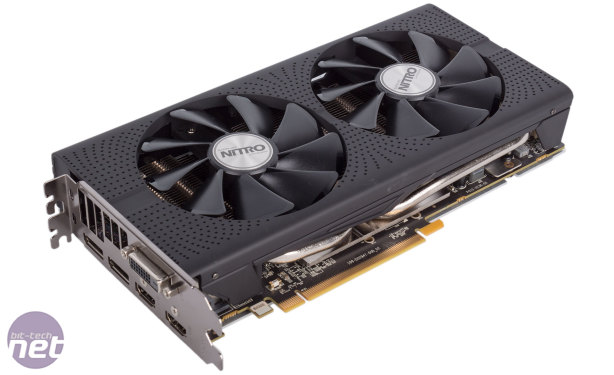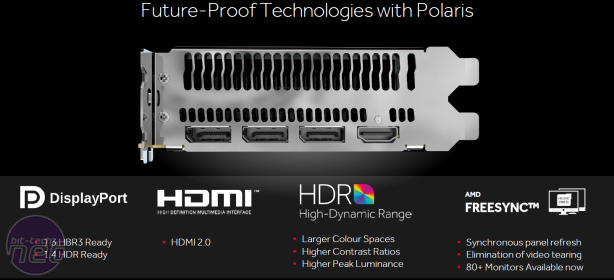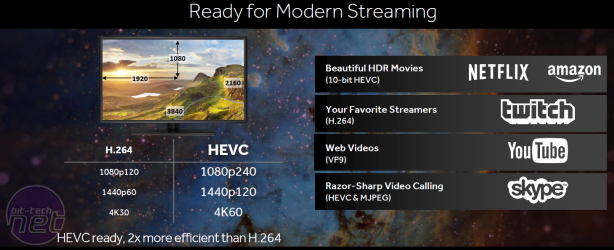Sapphire Radeon RX 470 Nitro OC 4GB Review
Manufacturer: SapphireUK price (as reviewed): MSRP £179.99 (inc VAT)
US price (as reviewed): MSRP $179.99 (ex Tax)
Today sees AMD launch the second graphics card based on its new Polaris architecture. The RX 470 utilises a cut-down version of the Polaris 10 GPU which is found fully enabled in the RX 480 and naturally hits a lower price point as a result. The RX 470's stated aim is to give gamers playing at 1080p a >60fps experience in the latest AAA releases as well as to bring a healthy feature bump to those running older tech – at sub-£200, we're firmly in mainstream pricing here, which means many users will be on longer upgrade cycles than the one or two years common at the high end. AMD says the RX 470 offers between 1.5x and 2.4x the performance of the R7 270 in modern titles.
The RX 470 is a hard launch, with products from all the usual board partners expected to be available immediately. As far as we know, there's no true reference design, so hopefully there will be a healthy variety in the offerings. We're also told that initially the RX 470 will be available in 4GB SKUs only – 8GB versions were also mentioned, but no word yet as to when they'll arrive. Pricing has also been a bit up in the air in the lead up to this launch, so changes over the coming weeks wouldn't surprise us. Most models, we're told, will retail today for £180, but come Monday Overclockers UK should be carrying a reference speed Sapphire odel for just under £170. Anyway, we've been outfitted with a custom-cooled, pre-overclocked model from Sapphire, set to retail for £180, but we'll run down the general RX 470 basics first.
If you're familiar with the Polaris 10 GPU in the RX 480, then you're familiar with what's found in the RX 470 too. Instead of the 36 Compute Units in the fully enabled part, we here have 32 Compute Units, equating to a reduction in processing power of just over 10 percent – the stream processor counts drops to 2,048 and the texture units to 128. Otherwise it's the same front end, with eight Asynchronous Compute Engines and the main Graphics Command Processor, while each of the Shader Engines retains four Render Backend units for a total of 32 ROPs. Reference clock speeds are a little lower at 926MHz base and 1,206MHz boost, but they're the only differences on the GPU front. As to the memory, it's the same 256-bit interface, but again clock speeds are slightly lower at 6.6Gbps effective. With the reduction in raw processing power and clock speeds, AMD is able to rate this as a 120W part, down from 150W for the RX 480.
| AMD Radeon RX 480 | AMD Radeon RX 470 | AMD Radeon R9 380X | AMD Radeon R7 370 | |
| GPU | ||||
| Architecture | GCN 4th Gen | GCN 4th Gen | GCN 3rd Gen | GCN 1st Gen |
| Codename | Polaris 10 | Polaris 10 | Antigua XT | Trinidad Pro |
| Boost Clock | 1,266MHz | 1,206MHz | 970MHz | 975MHz |
| Base Clock | 1,120MHz | 926MHz | N/A | 925MHz |
| Stream Processors | 2,304 | 2,048 | 2,048 | 1,024 |
| Layout | 4 SEs, 36 CUs | 4 SEs, 32 CUs | 4 SEs 32 CUs | 2 SEs, 16CUs |
| Texture Units | 144 | 128 | 128 | 64 |
| Rasterisers | 4 | 4 | 4 | 2 |
| Tesselation Units | 4 | 4 | 4 | 2 |
| ROPs | 32 | 32 | 32 | 32 |
| Transistors | 5.7 billion | 5.7 billion | 5 billion | 2.8 billion |
| Die Size | 232mm2 | 232mm2 | 366mm2 | 212mm2 |
| Process Node | 14nm | 14nm | 28nm | 28nm |
| Memory | ||||
| Amount | 4GB or 8GB GDDR5 | 4GB GDDR5 | 4GB GDDR5 | 2GB GDDR5 |
| Frequency | 1.75GHz or 2GHz (7Gbps or 8Gbps effective) | 1.65GHz (6.6Gbps effective) | 1.425GHz (5.7Gbps effective) | 1.4GHz (5.6Gbps effective) |
| Interface | 256-bit | 256-bit | 256-bit | 256-bit |
| Bandwidth | 224GB/sec or 256GB/sec | 211.2GB/sec | 182.4GB/sec | 179.2GB/sec |
| Card Specifications | ||||
| Power Connectors | 1 x 6-pin | 1 x 6-pin | 2 x 6-pin | 1 x 6-pin |
| Stock Card Length | 243mm | N/A | N/A | N/A |
| TDP | 150W | 120W | 190W | 110W |
With its 32 Compute Units, the RX 470 is broadly similar to the HD 7970 from five years ago, but really its closest counterpart from previous generations is the R9 380X – you can see just how similar they are in the specs table. The chips share the same layout and the RX 470 is effectively the 14nm version of the R9 380X – it's smaller, more efficient and has higher clock speeds. It's also not quite the same, as in the previous generation it was the R9 380X that was the fully enabled GPU, whereas here that's the RX 480 with 36 Compute Units.
We've run down the Polaris architecture in detail in our original RX 480 review, but briefly the new 14nm FinFET process, along with new circuit design techniques learnt from AMD's CPU development, greatly improves the efficiency. The design of the Compute Units remains unchanged, but there are some tweaks to logic and fixed function hardware. In the realm of asynchronous compute, for example, AMD has added the Quick Response Queue, allowing graphics or compute tasks to be given high priority so that they can finish faster without having to switch context entirely – it's what's used for the time warp function in VR. There's also Compute Unit Reservation which allows developers to partition CUs and dedicate them to tasks like TrueAudio Next (ray-traced audio). The geometry engines have been improved to better handle high tessellation and caches have been tweaked too. There are also better algorithms for AMD's delta colour compression, allowing it to make better use of the available memory bandwidth and improving efficiency.
Naturally, the RX 470 has full support for DirectX 12 and Vulkan. Asynchronous compute, the ability to dispatch graphics and compute tasks in parallel, is an important feature of both these APIs, and AMD's Asynchronous Compute Engines do seem to give it an edge in DirectX 12 games over Nvidia from what we've seen so far.
The RX 470 also gets the full suite of display-related upgrades. DisplayPort 1.3 is supported and the card is DP 1.4 ready too, which means support for new panels with higher resolutions and refresh rates. On the HDMI side, it's HDMI 2.0b, and FreeSync is supported through both HDMI and DisplayPort. The card also supports the upcoming HDR (high dynamic range) standard which will bring a fuller range of colours and much greater contrast ratios to supported displays. These features (excluding FreeSync, which is replaced by G-Sync) are all found on the GTX 1060, but Nvidia doesn't (yet?) have something at a competing price point that carries them.
Polaris also comes with upgraded video encode and decode blocks – the card is fully ready to support HEVC/H.265 content.
Implicit (i.e. CrossFire, which is driver managed) and explicit (managed by the game or app) multi-GPU setups are both supported on the RX 470. In fact, the Polaris 10 GPU means even four-way setups can be run.
Lastly, for overclocking, the RX 470 is fully supported by the new Radeon WattMan utility within Radeon Settings. It offers intimate control of power, temperature and fan speed as well as of course clock speeds – you even get per-state control of clock speeds and voltages if you really want to get involved.

MSI MPG Velox 100R Chassis Review
October 14 2021 | 15:04












Want to comment? Please log in.